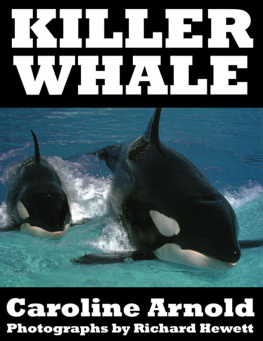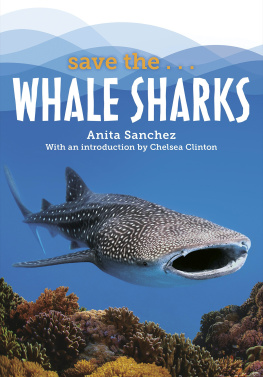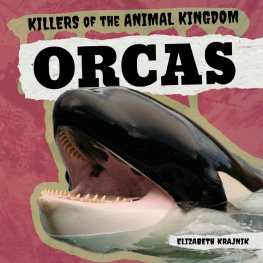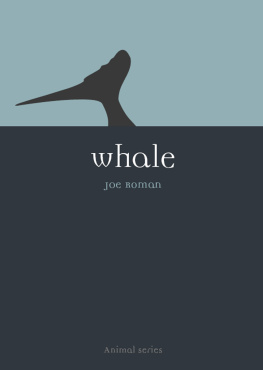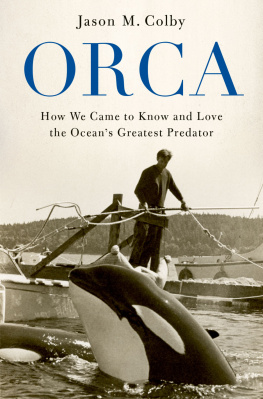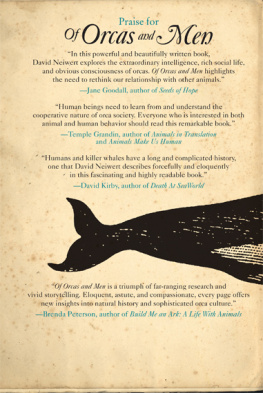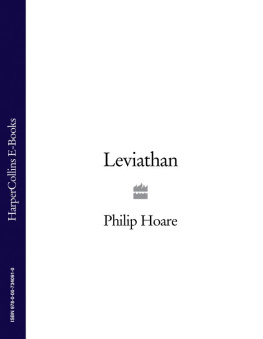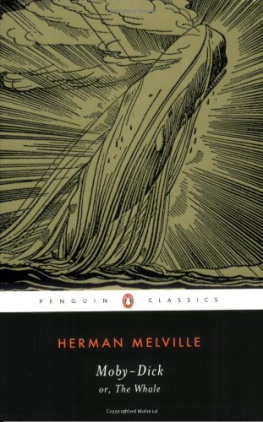THE KILLER WHALE WHO CHANGED THE WORLD

For the southern resident orcas
Copyright 2016 by Mark Leiren-Young
16 17 18 19 20 5 4 3 2 1
All rights reserved. No part of this book may be reproduced, stored in a retrieval system or transmitted, in any form or by any means, without the prior written consent of the publisher or a license from The Canadian Copyright Licensing Agency (Access Copyright). For a copyright license, visit www.accesscopyright.ca or call toll free to 1-800-893-5777.
Greystone Books Ltd.
www.greystonebooks.com
David Suzuki Institute
www.davidsuzukiinstitute.org
Cataloguing data available from Library and Archives Canada
ISBN 978-17716-419-37 (cloth)
ISBN 978-1-77164-194-4 (epub)
Editing by Nancy Flight
Copyediting by Shirarose Wilensky
Proofreading by Stephen Ullstrom
Jacket design by Peter Cocking
Text design by Nayeli Jimenez
Jacket photograph Jeremy Koreski
We gratefully acknowledge the support of the Canada Council for the Arts, the British Columbia Arts Council, the Province of British Columbia through the Book Publishing Tax Credit, and the Government of Canada for our publishing activities.

And God created great whales.
GENESIS
Above everything is God, above God is the killer whale.
BILL REID
Inscription on his sculpture Chief of the Undersea World at the front entrance to the Vancouver Aquarium. Translated from the Haida.
CONTENTS
LOOMINGS
The Killer is never hunted. I never heard what sort of oil he has. Exception might be taken to the name bestowed upon this whale, on the ground of its indistinctness. For we are all killers, on land and on sea; Bonapartes and Sharks included.
HERMAN MELVILLE, MOBY-DICK; OR, THE WHALE
July 16, 1964
THIRTEEN KILLER WHALES break through the pristine water off Saturna Island to take a breath under the morning sun. Their jet-black dorsal fins slice through the surf off Canadas west coast and Joe Bauer cant believe what hes seeing.
Two months. The fisherman has waited two months for this moment, and now, just as hes packing up camp, the day after the mission has been abandoned, a pod has appearedand the whales are swimming toward the shoreline. Whales! shouts Bauer.
When Samuel Burich hears his friend, he cant believe it either and doesnt even glance up as he yells, Bullshit! Then he looks out at the ocean.
Burich has been commissioned to craft an anatomically accurate, life-sized facsimile of the oceans apex predator for the Vancouver Aquarium. The sculpture of the creature known as the fiercest, most unpredictable killer on the planet will be the aquariums centerpiece. Now, after eight weeks of waiting, watching, and dreaming, a killer whale is in sight. Theres only one thing Burich needs to do with the whale that will serve as the inspiration for his art.
Kill it.
Burich takes his place behind an antique muzzle-loaded Norwegian harpoon gun and lines up his target. The bigger whales seem to sense trouble and swim back out to sea. But the smallest one looks Burich right in the eye.
Burich stares back at his prey and gauges the distance. Its no more than ninety feet away. His guns range is a hundred.
He braces for the recoil from the gunpowder charge and fires. A four-foot-long, two-inch-thick steel bolt flies over the oceana six-hundred-foot line of rope holding three bright orange buoys known as Scotchmen trails in the sky like a kite tail and... nothing.
The small whale leaps and vanishes under the ocean, as if taunting the would-be whaler. Burich is devastated. The mission is over. Hell never be able to retrieve the harpoon line in time to prepare a second shot before the pod swims away.
Bauer, who is taking photos from the bluff below, has a better view through his camera lens. Burich has harpooned a whale.
The spear pierced the skin just behind the skull and hooked the killer like a giant baitfish the men could use to catch a bigger whale. And if they had another harpoon ready, Burich might take aim at one of the larger killers diving toward their catch.
Their ears still ringing from the blast, Burich and Bauer race toward their boat. Burich has a rifle to finish the joband for self-defense, in case the other bloodthirsty creatures want vengeance. Everyone knows these are the planets most dangerous beasts, the only animal besides man that seems to kill for sport, a whale that will rip other whales to shreds.
As Burich and Bauer chase their victim, two larger whales burst through the water. The vicious killers are doing something unthinkable. They are carefully holding the smaller whale aloft. Its unconscious, possibly dead. This isnt an attack; its a rescue.
What kind of monsters are these?
CHAPTER ONE
THE SEA BEAST
Most whales, dolphins and porpoises are peaceful creatures. They have to eat to live, but otherwise they harm neither their oceanic neighbours nor man, unless bothered or injured. How different the orca, which seems to be filled with a burning hatred! Nothing that lives or moves in or on the water is safe from its assaults. Its size, power, speed, agility and disposition have made this black monster greatly feared wherever it is known. As the name Orcinus orca implies, it belongs to the kingdom of the dead.
JOSEPH J. COOK AND WILLIAM L. WISNER, KILLER WHALE!
W HEN SAMUEL BURICH fired his harpoon, everyone knew killer whales were monsters. The bad press for the species started with the Old Testaments scariest sermonJonah and the whale. In the first century, Roman historian Pliny the Elder described killer whales as loathsome, pig-eyed assassins, and warned that a killer whale cannot be properly depicted or described except as an enormous mass of flesh armed with savage teeth.
In 1758, Carolus Linnaeus, the Swedish naturalist who developed taxonomy, dubbed the creatures Orcinus orca in his Systema Naturae. The origin of the name depends on whether you believe the root comes from Orcus (Romes god of death or the underworld) or ork (from the French term orque, which was used to describe sea monsters long before it became the name of the villains in The Lord of the Rings). Whichever version you prefer, the Latin translates as of or belonging to the kingdom of the dead, bringer of death, or devil whale.
In 1874, American naturalist Captain Charles Scammon warned that in whatever quarter of the world [killer whales] are found, they seem always intent upon seeking something to destroy or devour.
The Haida people of British Columbia dubbed killer whales skana, which translates as killer demonsupernatural power. Alaskas Aleut called them polossatikthe feared one. First Nations opinions about killer whales varied, probably based on which whales they encountered, but whether they viewed the creatures as potentially dangerous spirits (as the Haida did) or reincarnations of their ancestors (like the Nuu-chah-nulth), the First Nations in North America respected them as intelligent beings who ruled the ocean just as humans ruled the land.


